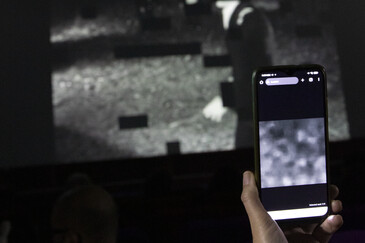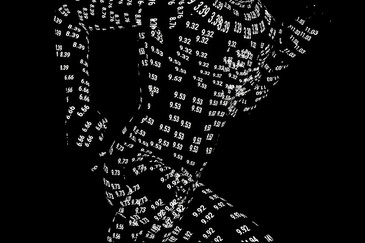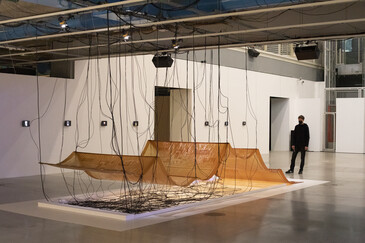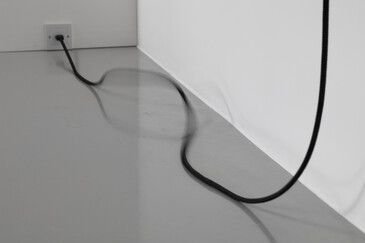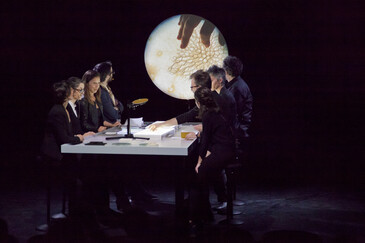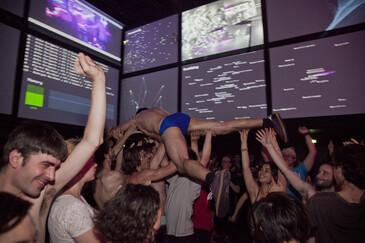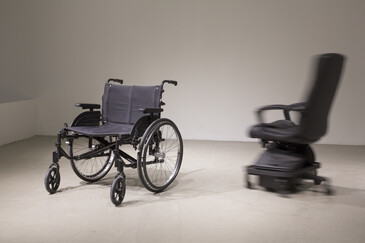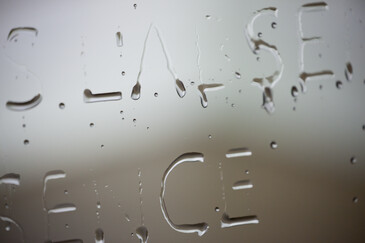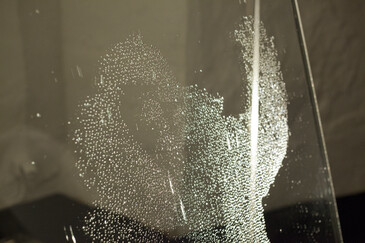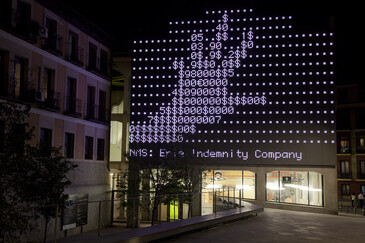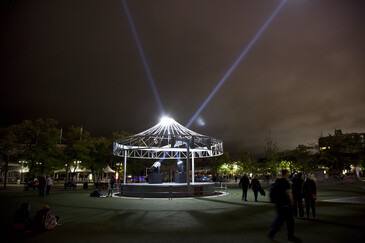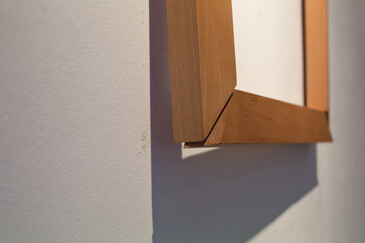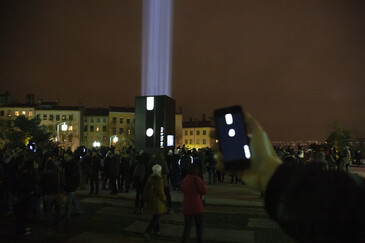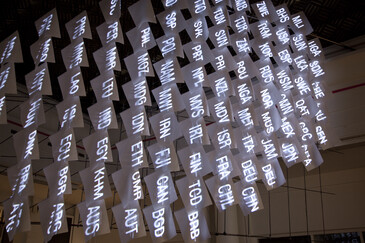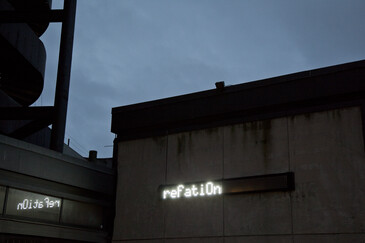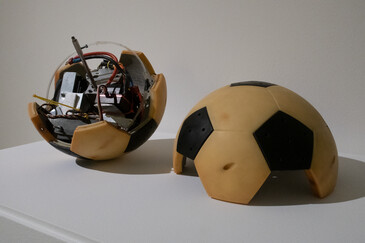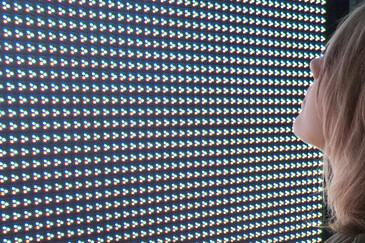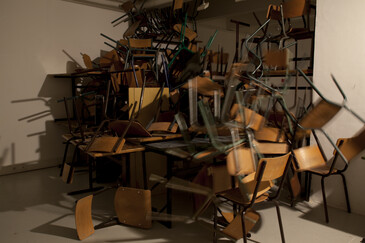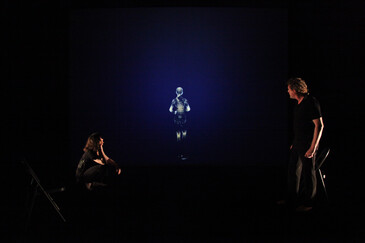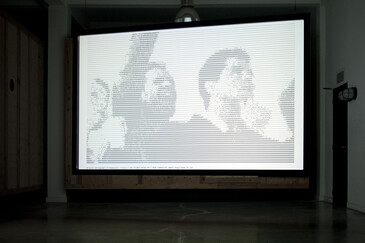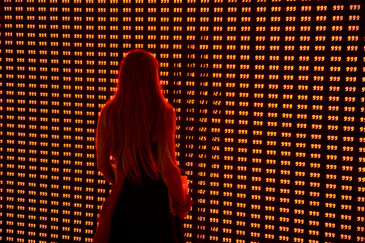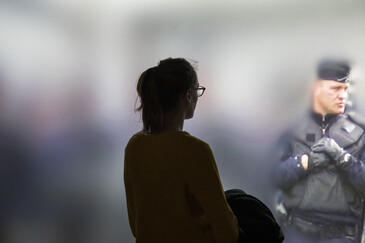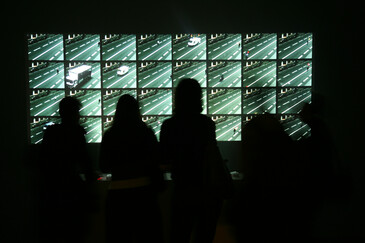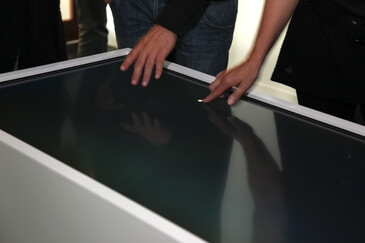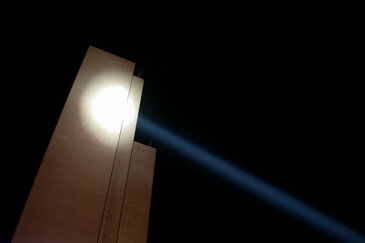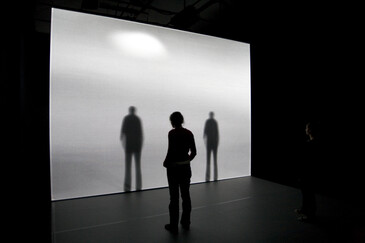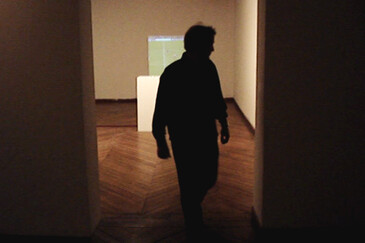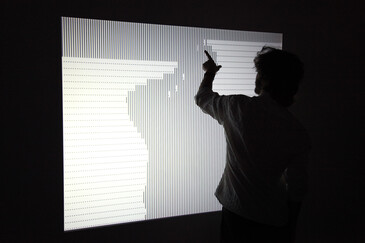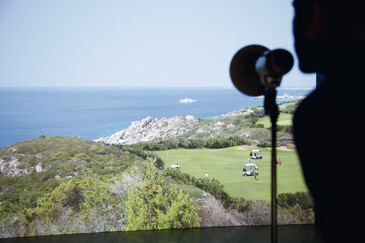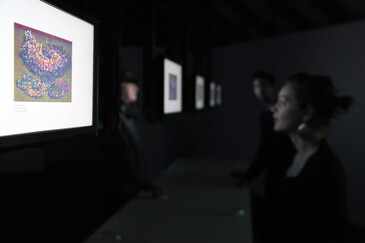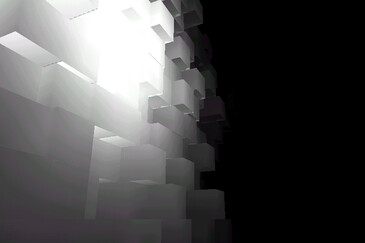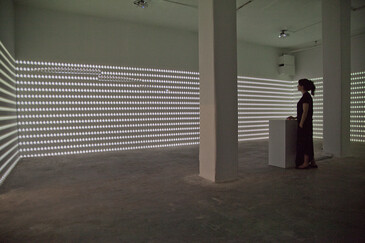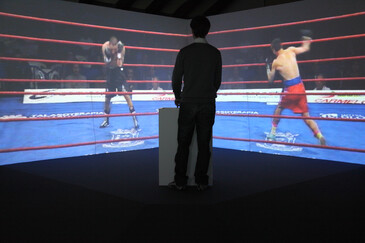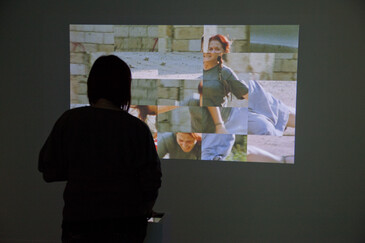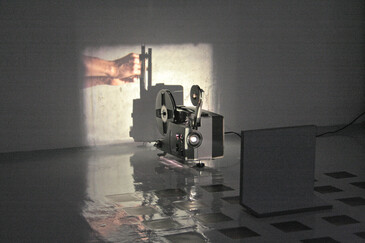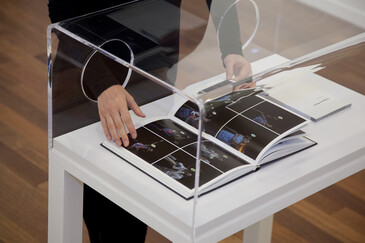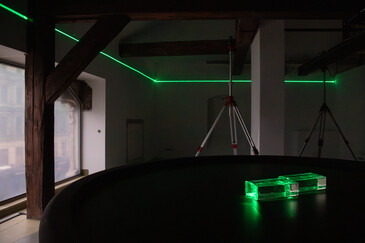
If I Were U
An economy of the gaze
Proposal for an artistic game environment on the internet, work in progress since 2000
Samuel Bianchini
3D Engine Design and Programming: Yann Creac'h
assisted by Ibrahim Mubarak
Sound Engine Programming: Peter Hanappe
Sound Design: Johnathan F. Lee
Game Design: Emmanuel Guardiola
Production: Dispothèque
IIWU is technically supported and financed by the Fondation Daniel Langlois pour l'Art, la Science et la Technologie, and has received financial support from the French Ministry of Culture (the Dicream program), from the Société Civile des Auteurs Multimédias and the Fondation SFR-Cegetel in partnership with ICN Graduate Business School and the École nationale supérieure d'art de Nancy.

If I Were U (IIWU) is a game environment that implements an "economy of the gaze" for collective use on internet. This environment plunged in darkness materializes the gaze of each user into a luminous projection. Each perceives the gaze of the others and sees what they see. The gaze thus materialized as a sensorial vector (the light beam is used to see) also becomes a "resource" that can lead to exchanges. The management of gazes tallied in the currency of "points of view" or "POVs" is the basis of IIWU’s ludic aspect.
On the Web, the IIWU environment is shared between the various players who meet there. The architecture of this environment is modular and comprises a variable number of "rooms." Each room identifies a player and symbolizes his or her "home," which can be constructed and manipulated. Taken as a whole, these rooms, which lead from one to the other, constitute IIWU’s game environment.
Like building blocks, these rooms are exclusively built and furnished from a single module common to all: a small black cube, a sort of 3D pixel that has no texture but which has properties of reflection and absorption of light. Starting from an elementary three-dimensional system, the users can engage in a sort of construction game wherein they assemble these cubes to furnish or lay out their rooms and set POV traps. Totally black and plunged in darkness, these rooms are revealed by the light of the gazes: the players’ light beams embrace the forms resulting from the arrangement of cubes.
While the visual environment in black and white tends toward abstraction, the sound, on the other hand, not only allows the player to find his or her bearings but it also completes our visual perception and stimulates our imagination, much like a branch snapping in the deep of the night. The various noises constitute the sound of both the environment itself and of the different players, particularly when they move about. Far from any redundancy with the visual elements, the sound intervenes off-screen in a way that is prone to continually revive the desire to see more. This desire goes hand in hand with the necessity to keep active and progress in the environment in order to obtain POVs, which allow each user to develop his or her room and take part in this economy of the gaze. It is an economy that draws on the materialization of the gaze in order to valorize it and to provide a hold on a very real situation today, wherein the "pay per view" concept and audience ratings could soon become the determining factors of any media paradigm’s viability.
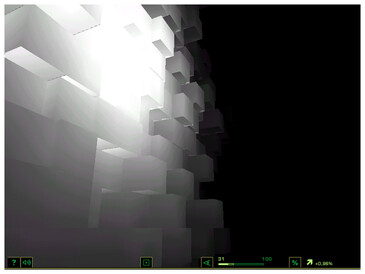
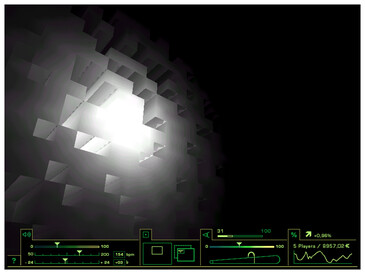
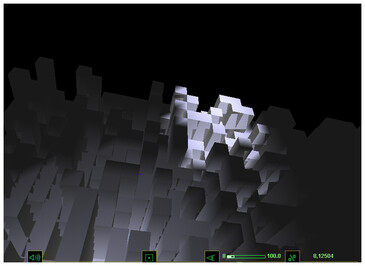
The art project IIWU led to the development of two softwares distributed under the terms of the GNU General Public License:
- "Muon3D," a multi-user 3D engine, developed under the supervision of Yann Creac'h;
- "FluidSynth," a synthesizer software for interactive, multi-user sound design, developed under the supervision of Peter Hanappe (http://www.fluidsynth.org).

